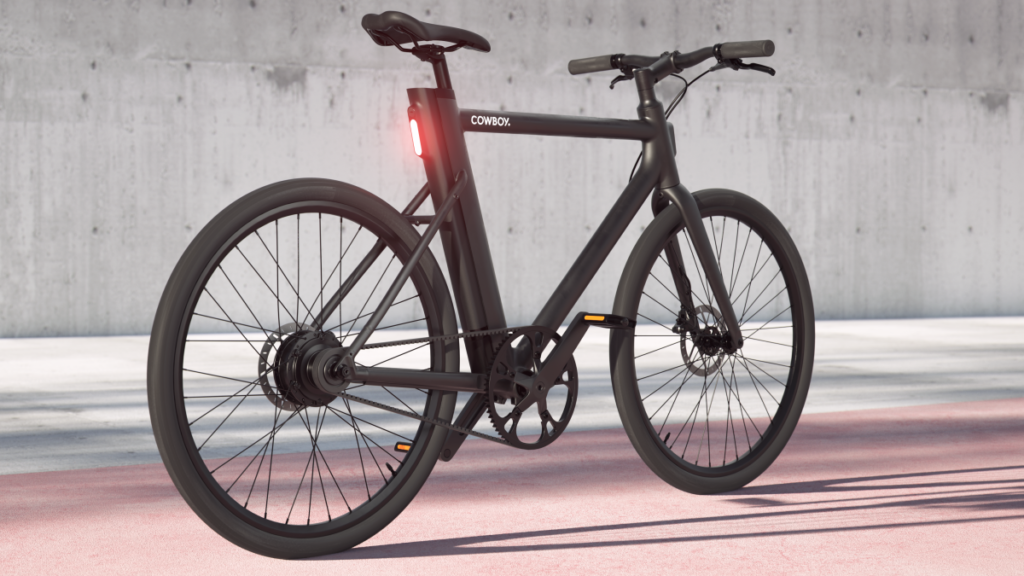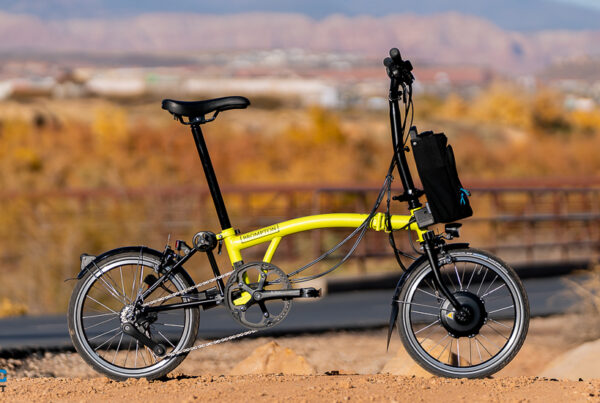Is the Smart eBike Finally Here?
Cowboy are one of the new breed of tech-savvy e-bikes looking to make a real impact in area where other ‘smart’ e-bikes have come and gone.
So, what’s a smart e-bike? It’s really just shorthand for any e-bike that has some degree of wireless connectivity that lets you either import data that can be displayed on the e-bike, like a GPX route file, or allows you to access some of the digital parameters of the e-bike, for example, its motor performance characteristics.
The ‘smart e-bike’ connected to the ‘internet of things’ has been talked about for years and there have been many concept e-bikes at trade shows boasting all sorts of functionality but these have rarely made it into the real world. But there are signs that the world of smart e-bikes is finally starting to awaken.
Shimano & Bosch
Progress from the main mid-drive manufacturers could best be described as cautious but 2020 and 2021 e-bikes are now arriving with an increasing amount of connectivity, allowing you to use either your smartphone or other third-party wireless device like a bike computer and/or GPS unit to enhance the use of your e-bike.
More modern Shimano mid-drives allow connectivity to either their E-tube Ride app or their E-tube Project app. The former wirelessly turns a smartphone into a bike computer which can then be attached to your handlebars to give real time metrics like speed, battery capacity and estimated range as well as allowing some limited downloadability of google maps which can be used for real time navigation. The latter allows rider modification of power settings on the fly:
E-tube Project also allows you to change the e-bikes performance characteristics like the automatic gear shift parameters Di2 automatically shifting hub gears or the power profiles on any Shimano Steps e-bike that can connect to the app.
Bosch have gone in a slightly different direction with display connectivity enhancements.

The standout product here is their new touchscreen Nyon display which they say ‘paves the way for a fully connected e-biking experience’. It won’t just appear on new e-bikes as there is certainly some degree of retrofitability depending on the age and model of your particular ‘Bosch bike’. There are all sorts of enhancements – think GPX file importation, Strava, Komoot, heart rate connectivity, detailed metrics on how much human power you are contributing (useful for fitness-minded riders). Note the Nyon has a GPX unit inbuilt too so there is no actual necessity to link it to your smartphone or any other device although that will obviously allow it to work with more data. There’s much more to the Nyon than this though, so if you have an hour to spare Propel e-bikes have the first Nyon unit in the US and are here to walk you through it all in detail:
In short, as Shimnao and Bosch demonstrate, connectivity could advance in two major areas; beaming more info onto your display from the internet but also allowing you more control over more features and of your e-bike. At the minute the manufacturers’ attention appears to be on customizing motor power output but future areas for personalization could include ABS braking performance and automatically adjustable suspension.
Stay Safe & Secure the Smart Way
Both safety and anti-theft enhancements are also firmly on the horizon too.

The long slim bank of lights to the right of the display here is effectively a radar-activated early warning system showing vehicles approaching from behind. No more nasty surprises from silent electric cars sneaking up on you!
The Cannondale Navarro Neo 1 has a Garmin Varia radar unit built into the rear light and shows vehicles approaching from behind detect moving objects up to 140 metres behind you. These appear ‘virtually’ on the light bar mounted next to the Kiox display on your handlebars and so you can see vehicles approaching in real-time. Vehicles approaching at high speed will even be displayed in red to warn of a potentially dangerous situation. The rear light integrated with the radar unit also gets brighter the closer a vehicle gets in order to improve visibility and draw attention to you. Genius!
There are an increasing number of ‘electronic locks’ activated via your smart phone that lock the motor in place to deter casual theft if you leave your bike outside whilst nipping into a shop for example – no one will be able to easily wheel it away. A variant on this tech is the latest Bosch ‘Kiox lock’ – Pay a one-time fee of € 9.99 and you’ll be able to link the display to your bike, meaning the motor will only work with exactly that Kiox display fitted. If thieves try to get the bike unlocked at a Bosch dealer, the bike will be immediately identifiable as stolen.
Smart City Slickers

Van Moof’s S3 and X3 were designed as fully connected urban e-bikes from the ground up and are proving popular.
It will be interesting to see how hi-tech e-bike manufacturers fare – that is those who have designed high-tech e-bikes from the ground up. Perhaps most notable are the new S3 and X3 models from Van Moof, launched in early 2020. They offer automatic shifting, in-built lights, anti-theft tracking and a proximity-based immobilizer. If sales and reviews continue to be positive – as appears to be the case – expect more and more tech to appear on more and more e-bikes designed as ‘fully-connected’ machines from the ground up. Crucially Van Moof have made this high tech relatively affordable at around US$2000.

Cowboy have made greater app capability a cornerstone of their most generation of smart e-bike
Belgian e-bike outfit Cowboy are also one smart e-bike brand that appear to be going places as they are now onto their 3rd generation of single-speed city bike. Greater app capability has been made the cornerstone of their recent 3rd generation launch as the app now features:
- Automatic unlocking: no need to take the smartphone out of your pocket, a proximity sensor unlocks the e-bike lock as soon as the owner is close enough.
- Theft alert: If someone tries to move or use the e-bike, the owner is automatically notified.
- Accident detection: Ability to register emergency contact who will be alerted if the owner has fallen down and did not report to the application that everything is fine.
- Air quality measurement: A new sensor allows the e-bike to detect, similar to how this is done in certain wearable watches, for example, the quality of the surrounding air.
Cowboy also offers an insurance product thanks to a partnership with Qover. For €8 per month, you can receive real-time notification whenever someone is trying to steal your bike and you’re insured against theft. For €10 per month, you’re also insured against damage.
Clearly simple, slick, city machines are the natural home for these ‘app heavy’ designs with minimalist hardware i.e. small motors and few or no gears that require no or minimal operation.
More Minimalist Still
The Zehus system is an example of one of the more popular ‘all in one’ e-bike drive systems with wireless control at its heart. Currently it is offered as a single-speed only (though Zehus have been saying for some time they are working on a multi-gear system). Power level settings are wirelessly controlled via a neat and well-designed app that shows when motor assistance is provided and how much, indicated by a circular ‘power ring’ around the outside of the speedometer that grows and shrinks according to how much assistance is being given. When regenerative braking is activated it turns from green to blue. One of the four power modes is also customizable by the rider.

Zehus’s neat, minimalist app needs just one screen to show the system’s key info. Power levels can be controlled just by using either the smartphone or the bluetooth-linked wireless switch on the right – or both can be used in conjunction with each other
There are two real downsides to the system. The small 160Wh battery, a consequence of it having to fit into the hub, means limited range as does the fact it is a gearless motor (gearless motors are inherently less efficient than geared ones). Brands to use Zehus include Hummingbird, Cooper and That, as pictured below.

Quella’s stylish single-speed uses the simple Zehus all in-one-hub motor system with inbuilt wireless connectivity
Multi-Sensory Thrill Machines
Taking hi-tech integration to the nth degree still costs though, as Croation supercar manufacturers Grab have demonstrated – their premium e-mtbs feature a built in eSIM which is on whenever the Greyp is running. With free 4G internet connectivity in more than 100 countries, gyroscopes, barometric pressure sensors, accelerometers, GPS, Wi-Fi, Bluetooth and a small processor running a custom Linux operating system this is a small computer on wheels.
The Greyp looks one of the best examples of how tech from different manufacturers can be made to work together to advantage the rider; for example, the GPS can even provide a real-time range estimation based on the battery remaining and the course the rider is planning to take. A wrist-strap heart rate monitor is also included as an accessory that modifies the motor output in real-time to maintain the rider’s desired heart rate – for example as part of a recovery plan for recuperating heart operation patients.

Greyp’s HD cameras are integrated into its lighting system.
The bike also features built-in front and rear wide-angle HD cameras. This really is an e-bike for the social media age; there is a dedicated sharing button on the bike’s handlebar controls so at the press of a button the system will automatically save the last 30 seconds of video and upload it to the rider’s social media account for sharing with their friends and followers. Additional data can be chosen for inclusion for overlay with the video, such as the bike’s energy usage or speed.
There’s much more detail in this Rob Rides video review:
You certainly get the feeling that truly connected e-bikes are still in their extreme infancy. Developments such as the rollout of 5G connectivity, simply meaning greater wireless speed and capacity, and the rise of graphene offering the tantalizing possibility of integrating almost organic like electrical conductivity into many more parts of the e-bike and even the riders’ clothes no doubt hold huge potential. If and how this potential will come to pass in the coming years will tell…
Stay tuned for more e-bike news and reviews and thanks for reading!
-Rich








